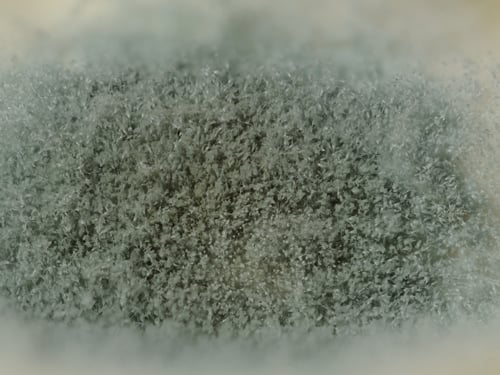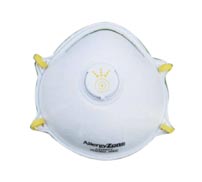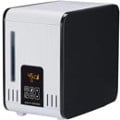- By Marketing
- In Mold Removal
MOLD ALLERGIES IN WINTER
Several factors lead to increased concerns about mold during the winter months. For one thing, moisture conditions indoors can lead to the growth of molds and mildews. While it’s true that forced heating systems make indoor air drier overall during the winter months, certain areas of the home may experience intensified levels of humidity because of a lack of ventilation. Bathrooms and kitchens are particularly susceptible to this problem. Steamy showers in small bathrooms spell trouble, as does the accumulation of steam from washing dishes and cooking in the kitchen. Because of cold weather, windows aren’t usually open, and condensation collects on indoor surfaces such as cold walls or windows and their frames, often creating ideal conditions for mold allergies in winter.
In addition, outdoor exposure is also common during early winter months when piles of leaves collect and absorb moisture. Cold, damp air promotes mold growth in many additional outdoor locations during this time of year as well. Mold thrives in dead vegetation, and is not killed by winter frosts. In fact, many molds can become dormant during the winter only to grow on plants killed by the cold when springtime arrives – making mold a year-round allergy trigger.
Any disturbance to an outdoor mold source, such as can occur when raking leaves or tending to a compost pile, disperses mold spores through the air, exposing individuals to varying levels of mold inhalation. So, whether you’re indoors or outdoors, mold allergies in winter can be a problem that cannot be overlooked.
IDENTIFYING THE SOURCE OF MOLD ALLERGIES IN WINTER
 Obviously, if you notice visible mold or mildew growing in a certain area of your home, it is clear that you have a mold problem. You will need to identify the source of the moisture and remedy the problem at the source. For instance, if you discover mold growing under your bathroom sink, look to see if there are leaky pipes that may be dripping water and repair them.
Obviously, if you notice visible mold or mildew growing in a certain area of your home, it is clear that you have a mold problem. You will need to identify the source of the moisture and remedy the problem at the source. For instance, if you discover mold growing under your bathroom sink, look to see if there are leaky pipes that may be dripping water and repair them.
However, though you may not notice mold growth in certain area, this does not mean that mold isn’t present or that it won’t grow if you don’t take action. Indications such as condensation forming on window panes or peeling paint on window sills suggest moisture buildup that makes the area susceptible to mold growth. Water stains likewise indicate a moisture problem and a potential hotspot for mold growth. Any area where water sits or steam collects, such as in shower stalls or bathtub rims, (particularly the area around toiletry bottles and the like) is also a place to keep an eye on.
CLEANING MOLD AND MILDEW
The most important thing to remember when cleaning up a mold or mildew problem is to protect yourself from exposure. Be sure to wear an allergy mask such as the AllergyZone N95 Filter Mask when cleaning mold. If you are sensitive to mold, you should also protect yourself from exposure by wearing goggles and gloves. Make sure to discard or thoroughly clean any equipment when you are finished with the job.
 Now for how to actually clean the mold: Many people believe that the best thing for cleaning mold and mildew is bleach or a bleach solution. However, there are two basic problems with using bleach to solve a mold problem, especially for allergy sufferers. One problem is that fumes and residue from bleach are toxic and can cause additional respiratory problems for sensitive individuals. Another problem is that bleach does not necessarily kill the mold, but can trick you into thinking that the mold is dead because the mold seems to disappear; however, it may actually just be whitened, but still there, propagating itself further. While bleach may be used on hard, non-porous surfaces (although we do not recommend it), using bleach on porous surfaces such as wood is simply not effective because mold’s roots can penetrate deep into the surface.
Now for how to actually clean the mold: Many people believe that the best thing for cleaning mold and mildew is bleach or a bleach solution. However, there are two basic problems with using bleach to solve a mold problem, especially for allergy sufferers. One problem is that fumes and residue from bleach are toxic and can cause additional respiratory problems for sensitive individuals. Another problem is that bleach does not necessarily kill the mold, but can trick you into thinking that the mold is dead because the mold seems to disappear; however, it may actually just be whitened, but still there, propagating itself further. While bleach may be used on hard, non-porous surfaces (although we do not recommend it), using bleach on porous surfaces such as wood is simply not effective because mold’s roots can penetrate deep into the surface.
To clean mold safely and effectively, use cleaners such as Vital Oxide Mold Remover and Disinfectant or EcoDiscoveries MoldZyme Mold and Mildew Remover. These cleaners will eliminate one potent allergen – mold – without introducing another one – toxic cleaners – into your indoor environment. Inhibit future mold growth by using a protective sealant in vulnerable areas of your home. Allersearch AllerMold is safe and effective and can be applied to any outdoor or indoor surface. Allergy Armor SureCote Mold and Mildew Resistant Sealant is similarly non-toxic and easy to use. Simply spray on any mold-prone surface and wipe clean for two to four years of protection. Vital Oxide, in addition to cleaning mold and disinfecting, also doubles as a mold inhibitor; it prevents the germination of mold spores for up to seven months.
Note: If the mold colony is larger than ten square feet, you should call a mold remediation specialist rather than handling the job yourself.
ALLEVIATING MOLD ALLERGIES IN WINTER
The best way to avoid suffering from mold allergies is to minimize exposure to mold in the first place. Do this by finding and eliminating sources of moisture that contribute to mold growth. In addition, take the following steps to reduce your exposure to mold:
- Always wear an allergy relief mask when doing yard work. Not only will a mask protect you from pollen during the spring and fall, but wearing a mask like the extremely comfortable, hand-washable Silk Comfort Mask will also protect you from inhaling mold spores while you rake leaves or perform other necessary wintertime yard duties.
- Protect yourself while you clean. Wearing a mask is also essential when you clean moldy areas of your home. If you prefer a disposable mask, the AllergyZone N95 Filter Mask, which comes in a 3-pack and filters particles as small as 0.3 microns in size, is an excellent option.
- Maintain proper levels of humidity. While indoor air in the winter tends to be on the dry side
 because of forced air heating systems, it is still important to monitor your home’s humidity with a humidity gauge, especially if you are using a humidifier. Ideal humidity levels for allergy sufferers are between about 40 and 50 percent. Many humidifiersalso come with built-in hygrometers to ensure that you don’t over-humidify your environment, a problem which could lead to excess moisture and mold growth.
because of forced air heating systems, it is still important to monitor your home’s humidity with a humidity gauge, especially if you are using a humidifier. Ideal humidity levels for allergy sufferers are between about 40 and 50 percent. Many humidifiersalso come with built-in hygrometers to ensure that you don’t over-humidify your environment, a problem which could lead to excess moisture and mold growth. - Use a sinus irrigation product like the SinuPulse Elite Nasal Advanced Nasal Sinus Irrigation System. As the Mayo Clinic points out, allergic fungal sinusitis, which occurs when fungus lodges and grows in the sinuses is a concern. For those who are prone to sinus infections, as many allergy sufferers are, it’s a good idea to take precautions against this complication by maintaining cleansed nasal passages. Regular sinus irrigation, whether with the SinuPulse system or with a neti pot, such as the Neilmed Nasaflow Neti Pot, will help to alleviate the stuffy or runny nose that can accompany exposure to mold.
- When possible, remain indoors when weather is foggy or damp, the Mayo Clinic also recommends. Furthermore, it is a good idea to sleep with your windows closed to shut out outdoor mold, which is highest at night during the coolest, dampest hours.
REACTIONS TO MOLD
Even though a person may not be allergic to mold, other reactions to mold pose a significant health risk. An AAAAI Position Statement entitled The Medical Effects of Exposure to Mold describes, “Mold can cause adverse human health effects in 3 specific mechanisms: generation of harmful immune response (e.g. allergy or hypersensitivity pneumonitis), direct infection by the organism, and toxic irritant effects from mold byproducts.” Hence, it is in the interest of everyone’s health to know what kinds of environmental conditions lead to mold and how prevent or remedy them in order to limit overall exposure.
The Mayo Clinic also reports that some molds may cause symptoms such as nausea, fatigue, fever, rashes, and coughing, even in non-allergic individuals. Infants may experience bleeding in the lungs (acute idiopathic pulmonary hemorrhage) when exposed to certain types of molds.
Those with weakened immune systems, even if they are not allergic to mold, may experience complications when exposed to mold. Mold exposure can often be handled well by healthy individuals, but may cause infections in those on immune-suppressant drugs or chemotherapy.
MOLD ALLERGIES AND ASTHMA
Mold allergies and asthma are a bad combination as exposure to mold can trigger asthma symptoms such as wheezing, coughing, and shortness of breath. In some cases, mold exposure can lead to a severe asthma attack. Therefore, asthmatic individuals must be aware of this link and of how to avoid encounters with mold.
MOLD ALLERGIES: SYMPTOMS AND EXPOSURE FROM FOOD
Beyond mold allergies in winter and contact with them in our environment, we are all exposed to a certain amount of mold every day, usually without any problem or reaction. Many of the foods we eat can contain mold without us ever being aware of it. However, those who are allergic to mold may react to exposure when subjected to too much of the fungi.
Individuals who are allergic to mold exhibit symptoms similar to those of other upper respiratory allergies when they are exposed to mold, including:
- Sneezing
- Runny or stuffy nose
- Cough and postnasal drip
- Itchy eyes, nose and throat
- Watery eyes
- Sinusitis, an inflammation of the sinuses
In relation to food, it is important to note that mold does not need to be visible to be present; molds have branches and roots that penetrate into the food where they cannot be seen.  Sensitive individuals should be aware of the following foods, which are more likely than other types of food to contain mold (list provided by WebMD):
Sensitive individuals should be aware of the following foods, which are more likely than other types of food to contain mold (list provided by WebMD):
- Cheese
- Mushrooms
- Vinegar and foods containing vinegar, such as salad dressing, catsup and pickles
- Sour cream, sour milk, and buttermilk
- Meat or fish more than 24 hours old
- Breads and other food made with yeast
- Sauerkraut
- Pickled and smoked meats and fish
- Dried fruits such as dates, prunes, figs and raisins
- Soy sauce
- Hot dogs, sausages
- Canned juices
https://www.achooallergy.com/learning/mold-allergies-in-winter/

 because of forced air heating systems, it is still important to monitor your home’s humidity with a
because of forced air heating systems, it is still important to monitor your home’s humidity with a